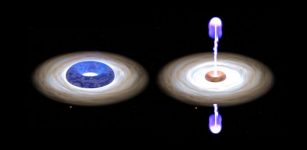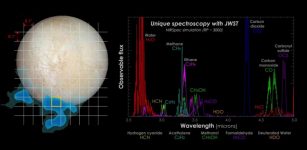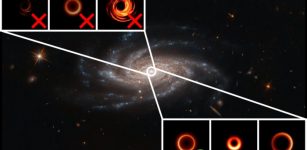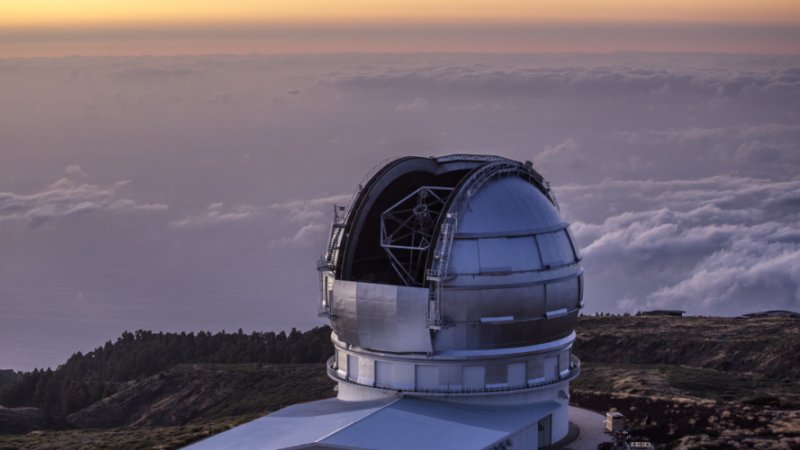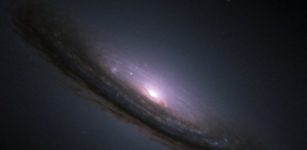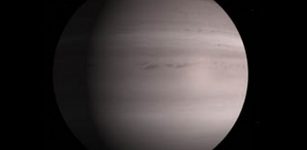Path To Razor-Sharp Black Hole Images – Discovered
Eddie Gonzales Jr. – MessageToEagle.com – A team of researchers has published new calculations that predict a striking and intricate substructure within black hole images from extreme gravitational light bending.
“The image of a black hole actually contains a nested series of rings,” Michael Johnson of the Center for Astrophysics | Harvard and Smithsonian (CfA), said in a press release.
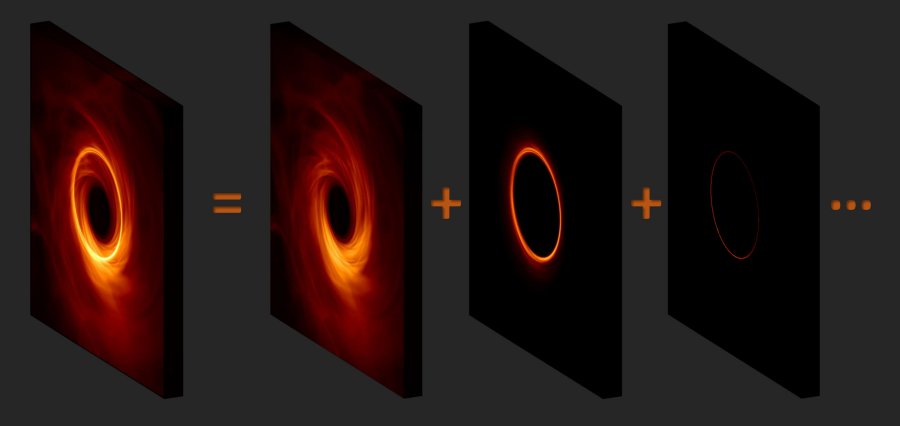 The image of a black hole has a bright ring of emission surrounding a “shadow” cast by the black hole. This ring is composed of a stack of increasingly sharp subrings that correspond to the number of orbits that photons took around the black hole before reaching the observer. Credit: George Wong (UIUC) and Michael Johnson (CfA)
The image of a black hole has a bright ring of emission surrounding a “shadow” cast by the black hole. This ring is composed of a stack of increasingly sharp subrings that correspond to the number of orbits that photons took around the black hole before reaching the observer. Credit: George Wong (UIUC) and Michael Johnson (CfA)
“Each successive ring has about the same diameter but becomes increasingly sharper because its light orbited the black hole more times before reaching the observer. With the current EHT image, we’ve caught just a glimpse of the full complexity that should emerge in the image of any black hole.”
Because black holes trap any photons that cross their event horizon, they cast a shadow on their bright surrounding emission from hot infalling gas. A “photon ring” encircles this shadow, produced from light that is concentrated by the strong gravity near the black hole. This photon ring carries the fingerprint of the black hole—its size and shape encode the mass and rotation or “spin” of the black hole. With the EHT images, black hole researchers have a new tool to study these extraordinary objects.
See also:
First Photo Of A Black Hole Released – This Giant Monster Is Larger Than Our Entire Solar System!
Questions And Answers About The First Image Of Supermassive Black Hole In M87
“Black hole physics has always been a beautiful subject with deep theoretical implications, but now it has also become an experimental science,” says Alex Lupsasca from the Harvard Society of Fellows. “As a theorist, I am delighted to finally glean real data about these objects that we’ve been abstractly thinking about for so long.”
The research team included observational astronomers, theoretical physicists, and astrophysicists.
“Bringing together experts from different fields enabled us to really connect a theoretical understanding of the photon ring to what is possible with observation,” notes George Wong, a physics graduate student at the University of Illinois at Urbana-Champaign.
Wong developed software to produce simulated black hole images at higher resolutions than had previously been computed and to decompose these into the predicted series of sub-images. “What started as classic pencil-and-paper calculations prompted us to push our simulations to new limits.”
The researchers also found that the black hole’s image substructure creates new possibilities to observe black holes.
“What really surprised us was that while the nested subrings are almost imperceptible to the naked eye on images—even perfect images—they are strong and clear signals for arrays of telescopes called interferometers,” says Johnson. “While capturing black hole images normally requires many distributed telescopes, the subrings are perfect to study using only two telescopes that are very far apart. Adding one space telescope to the EHT would be enough.”
The results were published in Science Advances.
Written by Eddie Gonzales Jr. – MessageToEagle.com Staff


